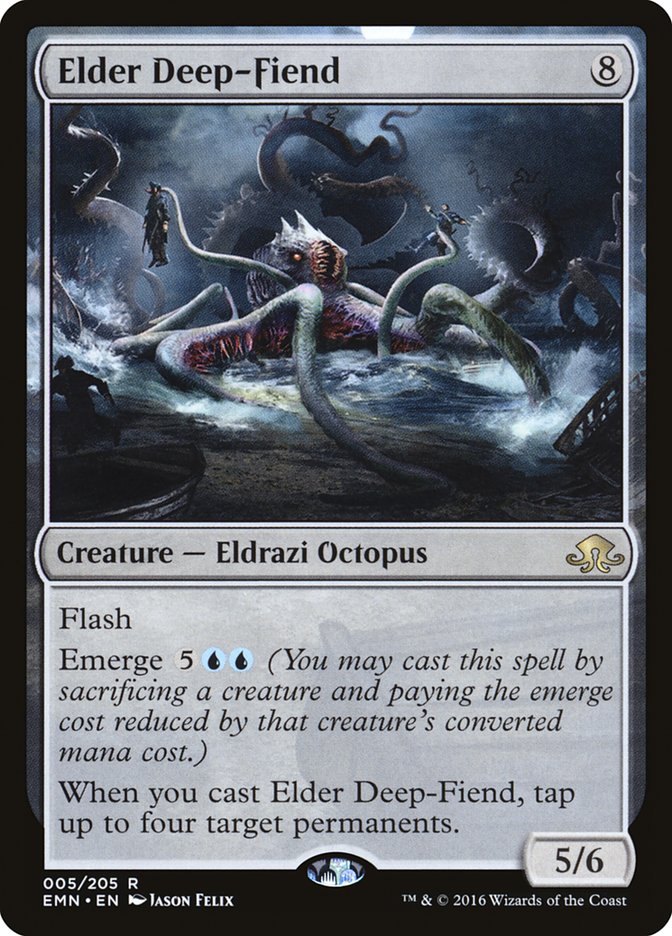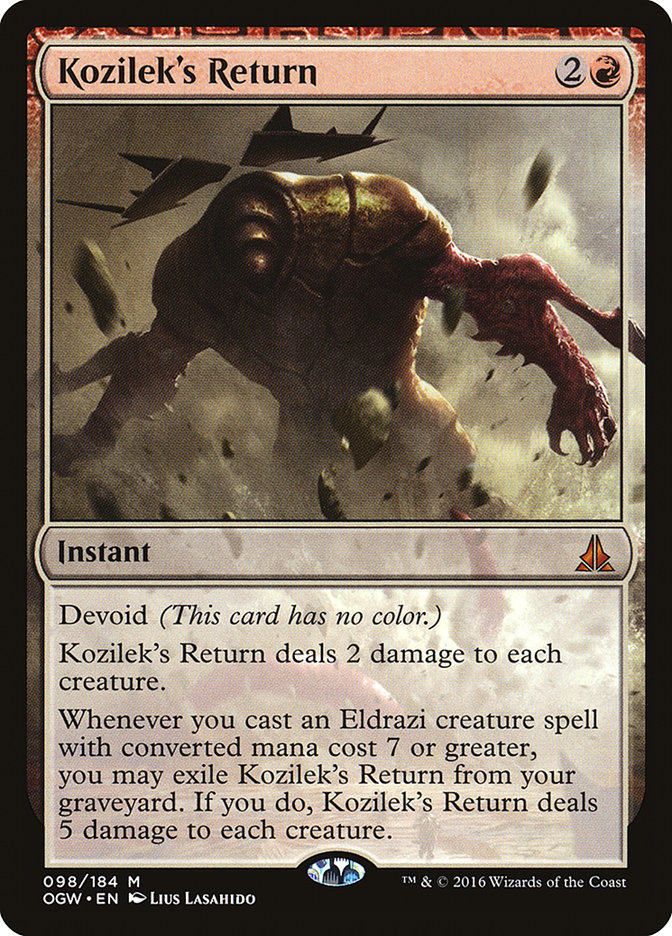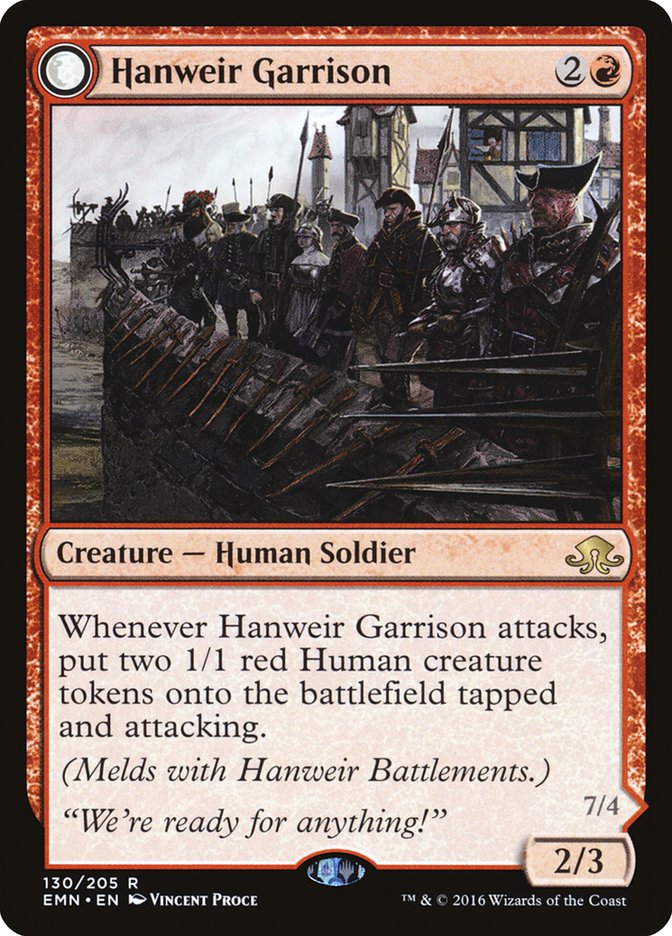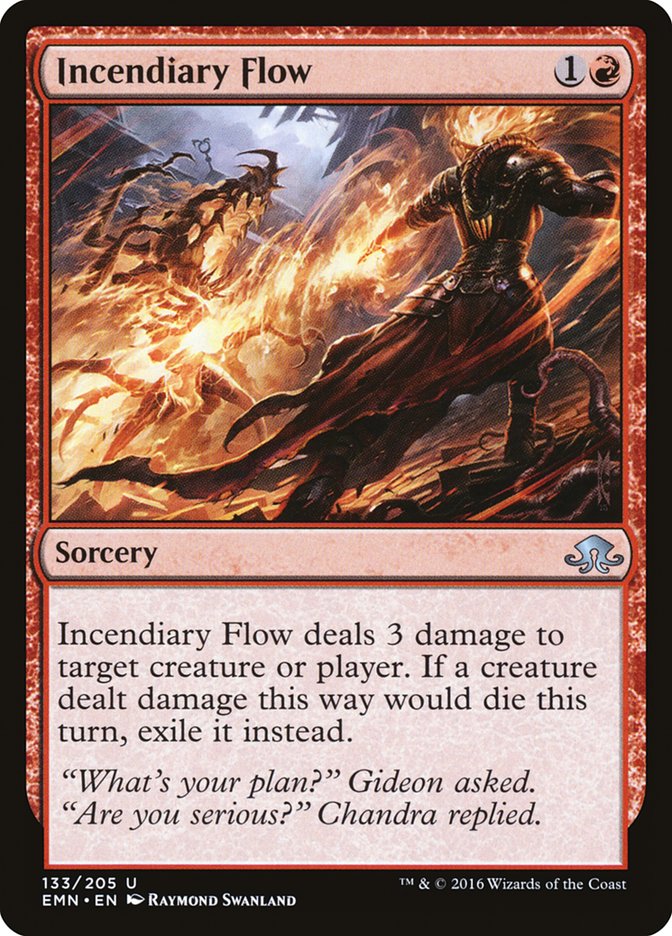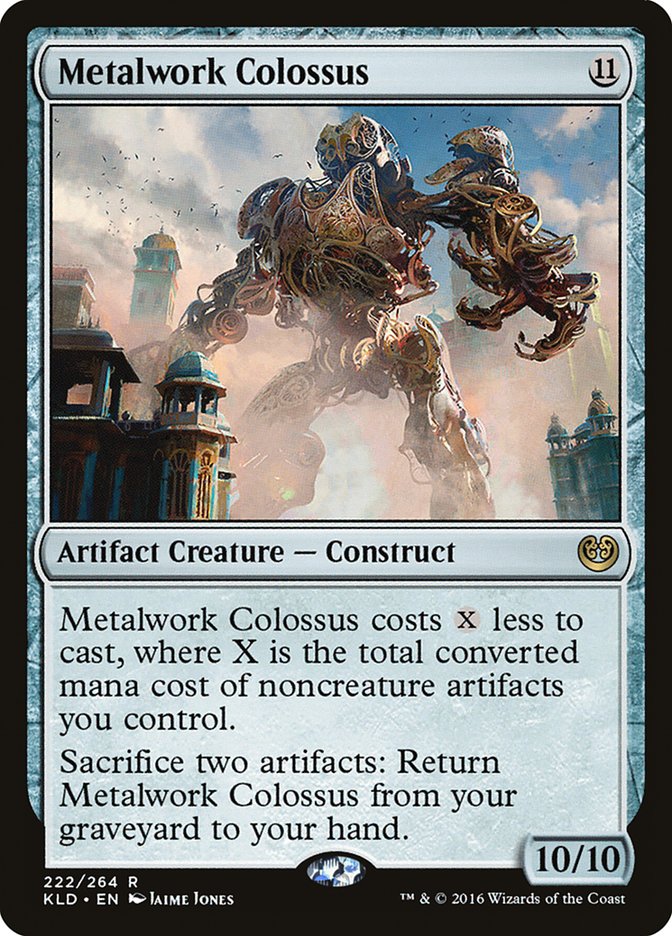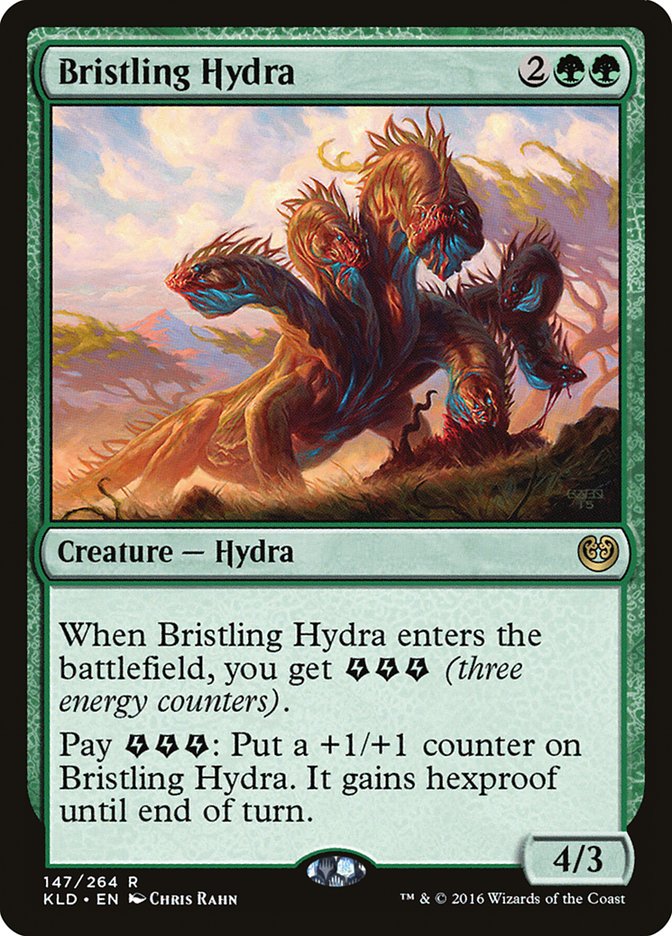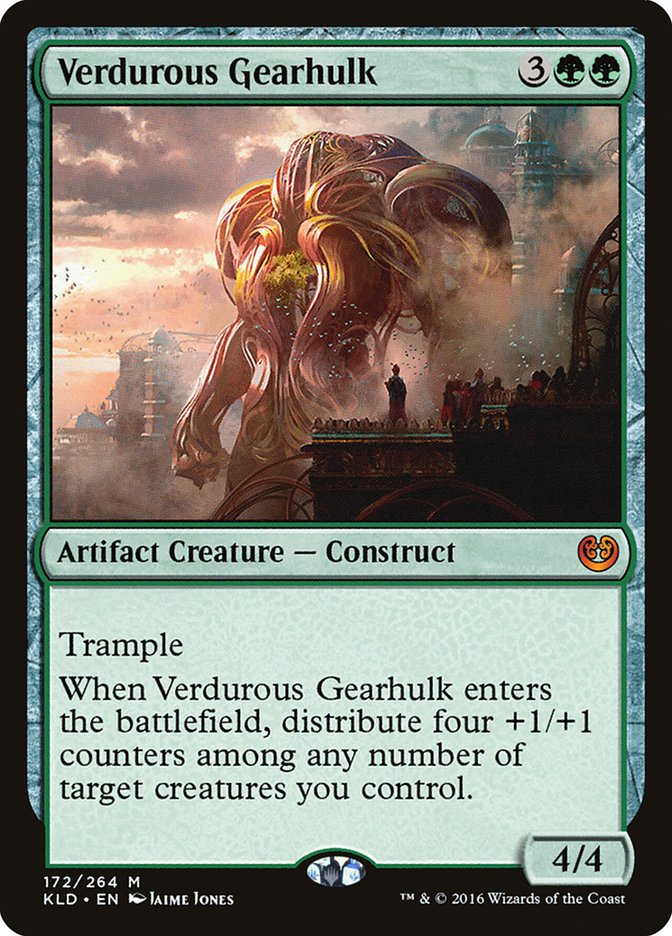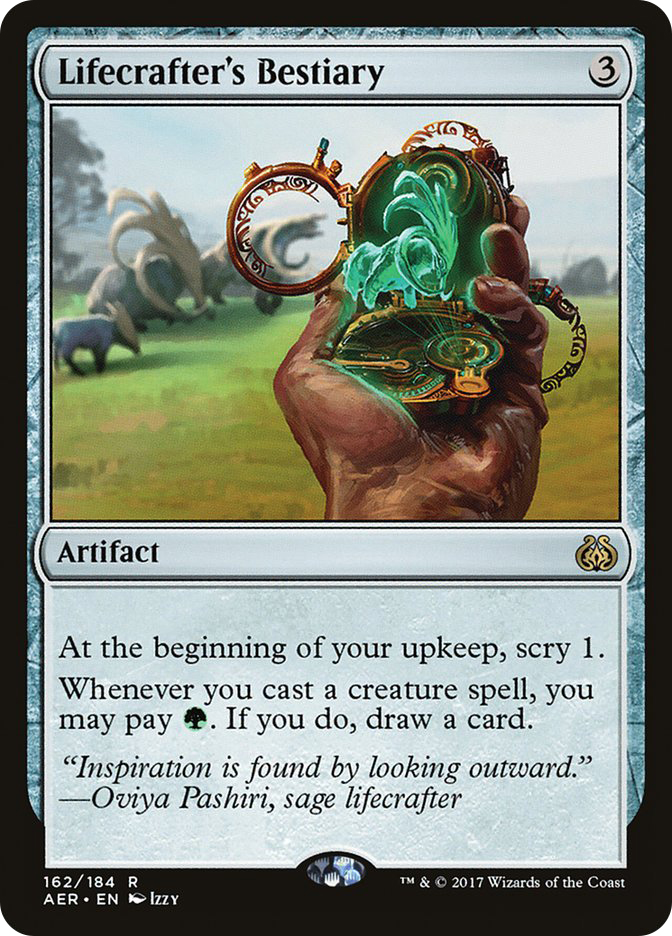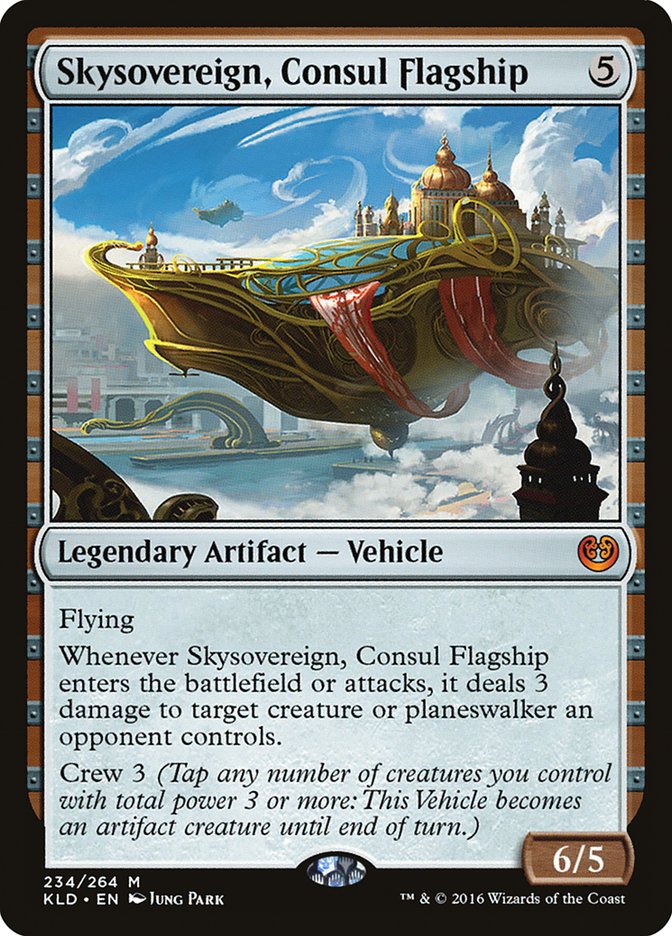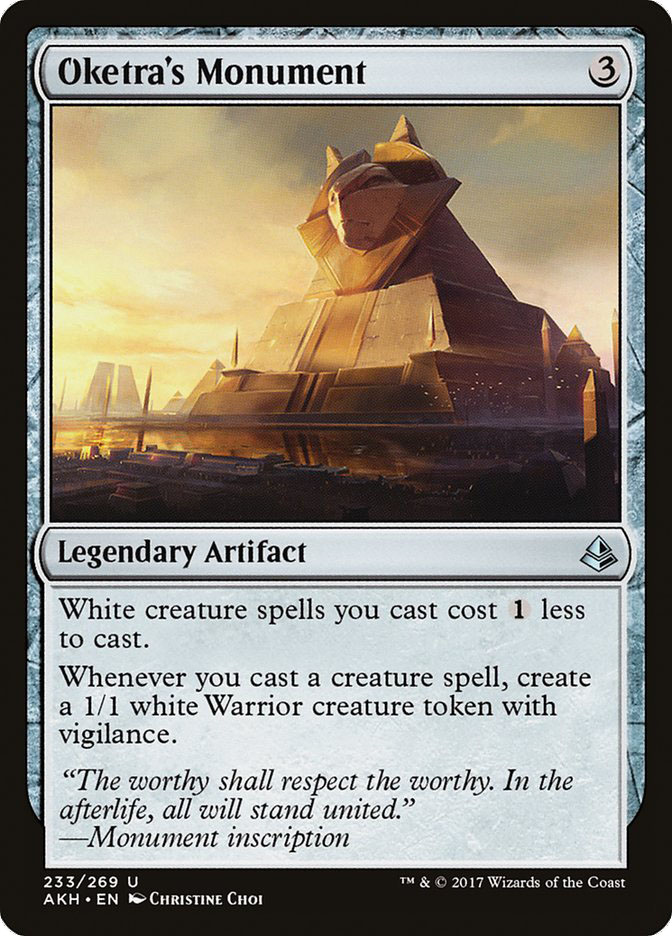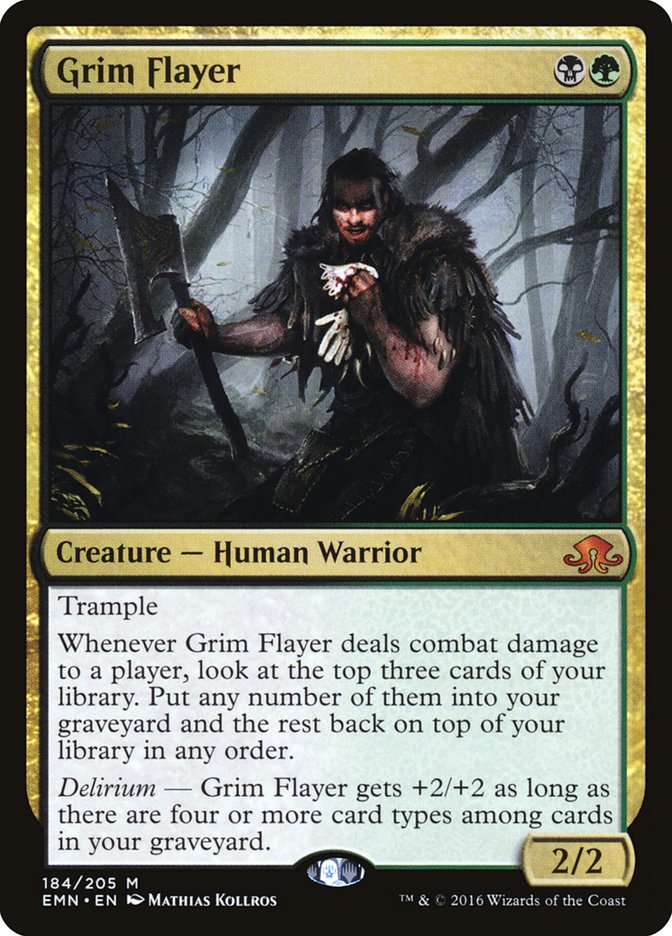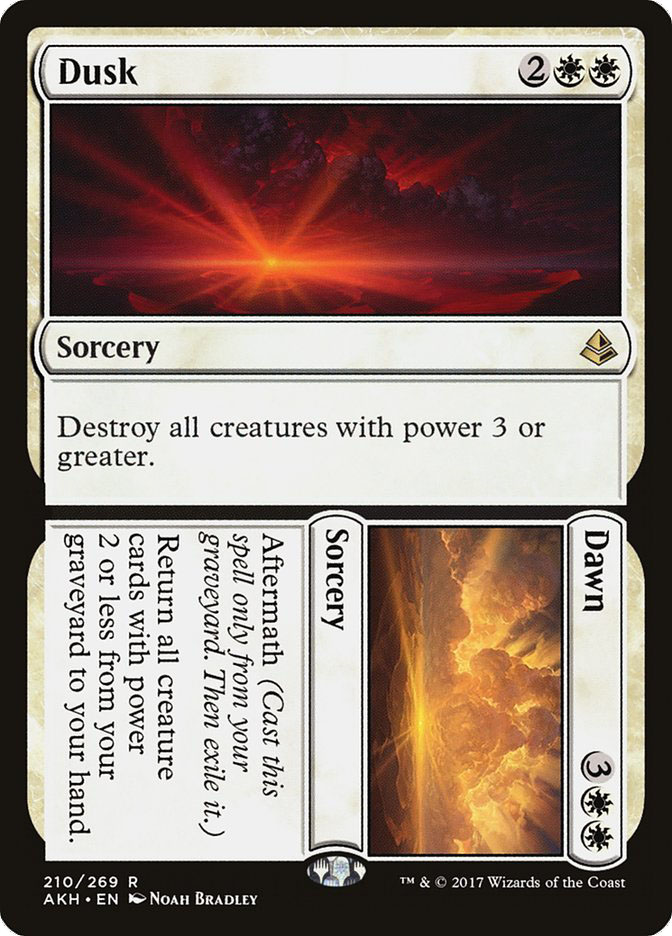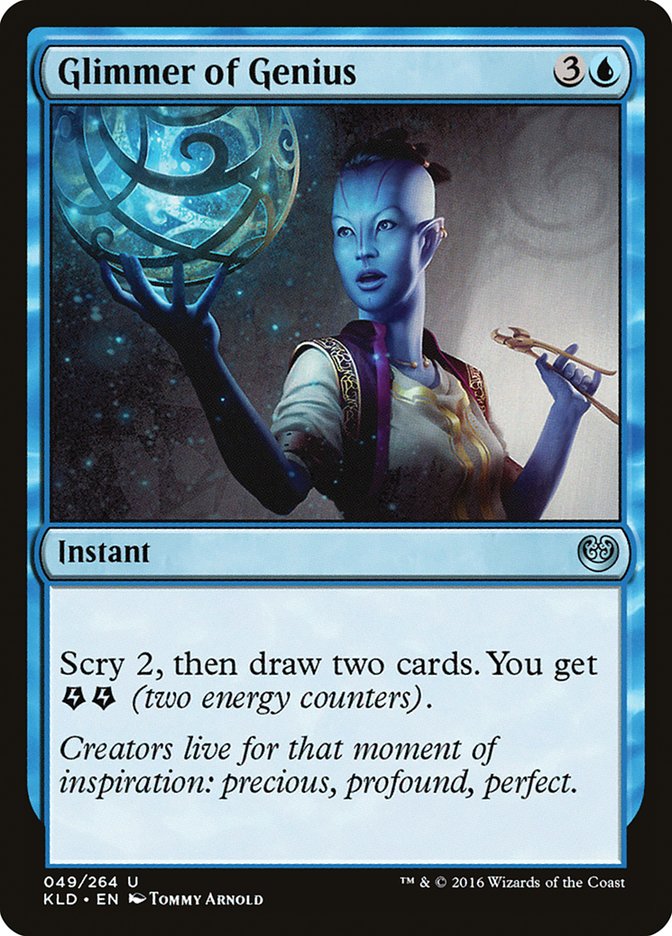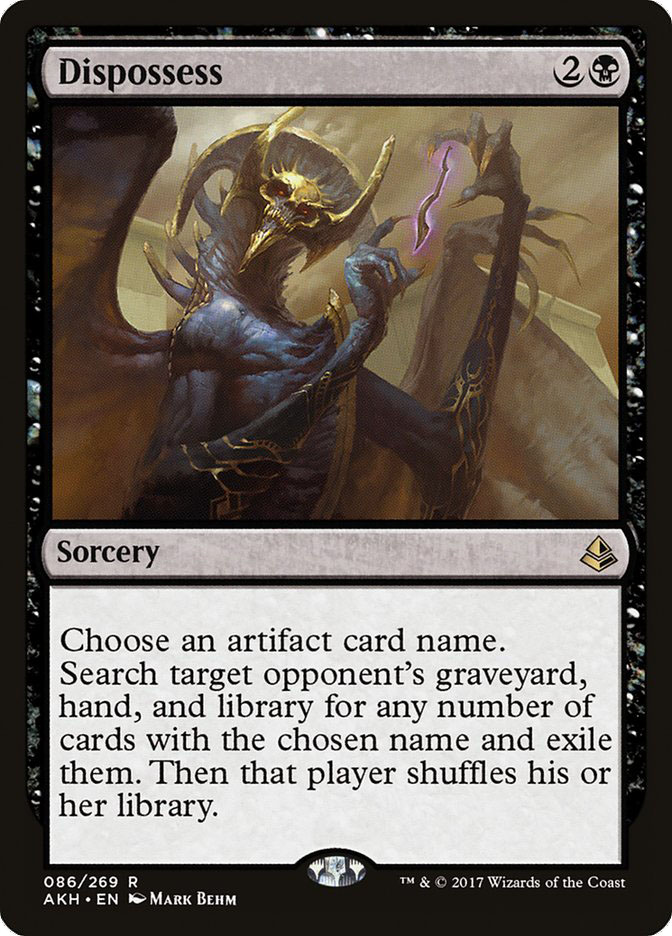Hour of Devastation is going to change Standard.
It isn’t going to completely upturn what has been developed.
This isn’t Eldritch Moon with absurd cost reduction mechanics. This isn’t Aether Revolt with two-mana 4/4s that dodge removal and two-card instant-win combos. This is a small set entering a large format with some of the most powerful sets in recent Standard memory.
This is how to properly fight all of the existing archetypes in the format. Whether the deck you decide on is old, new, or half and half, this will be important for navigating your way through deck construction, sideboarding, and playing the games at your next tournament.
Red Midrange
There are a bunch of different midrange decks trying to do the same thing: cast Glorybringer. Temur Energy, Temur Energy-Emerge-Delirium piles, and Mono-Red Eldrazi are the big ones. They almost all have Chandra, Torch of Defiance as well.
Creatures (23)
- 3 Tireless Tracker
- 4 Longtusk Cub
- 4 Bristling Hydra
- 4 Servant of the Conduit
- 4 Rogue Refiner
- 4 Glorybringer
Planeswalkers (2)
Lands (22)
Spells (13)

Creatures (16)
- 1 World Breaker
- 2 Tireless Tracker
- 3 Elder Deep-Fiend
- 1 Ishkanah, Grafwidow
- 3 Servant of the Conduit
- 4 Rogue Refiner
- 2 Glorybringer
Planeswalkers (2)
Lands (23)
Spells (19)
- 4 Kozilek's Return
- 4 Traverse the Ulvenwald
- 3 Vessel of Nascency
- 3 Grapple with the Past
- 4 Harnessed Lightning
- 1 Cut
Sideboard

Creatures (22)
- 2 Reality Smasher
- 4 Thought-Knot Seer
- 4 Matter Reshaper
- 4 Hanweir Garrison
- 4 Scrapheap Scrounger
- 4 Glorybringer
Planeswalkers (4)
Lands (26)
Spells (8)
- 2 Fatal Push
- 2 Cut
- 4 Abrade

Games with these decks come down to them having a key turn where they get a two-for-one and turn the game around: a Glorybringer trigger, a Hanweir Battlement trigger, the turn Tiresless Tracker gets big enough to block, etc.
The main way to beat them is to properly push through all of their action. They can only really cast one spell a turn, so don’t let them use that spell to get more than one effect or turn ahead.
You need to get out under Chandra, Torch of Defiance with multiple threats so that a -3 to deal four damage results in Chandra dying on the way back. You need to attack into Tireless Tracker or Longtusk Cub hard enough that they look slow, or just kill them on sight and attack. You need to be ahead enough on turn 5 that you can leave up instant answers for Glorybringer, or ahead enough to not care about losing a creature and able to close before the exerted Glorybringer untaps.
If you get stopped by a Longtusk Cub or Tireless Tracker early, you will lose. If you are on the back foot after a Glorybringer resolves, you will lose. If you let Chandra start ticking back up, you can lose, though them going up one card a turn is more beatable than it looks because they are still often limited to one spell a turn on mana.
I said the word “attack” a lot, but the focus should be about forcing them to play a game where all their cards only leave them at parity, they only get one major action a turn, and you have something pushing you ahead.
Let’s take an example of playing B/G Constrictor against Temur. You are on the draw; they pass on turn 2. You cast a Longtusk Cub and it gets Harnessed Lightninged. They cast Rogue Refiner. You now want to cast Walking Ballista for one over Winding Constrictor because they can’t use a Chandra -3 effectively against it. You get to turn 4 and cast the Winding Constrictor with Grasp of Darkness up instead of Rishkar, Peema Renegade so their Glorybringer is nullified. You miss a land drop and just sit on activating Walking Ballista because you still don’t want to let them have an effective turn.
Another critical number against these decks is five. Chandra deals four damage. Glorybringer deals four damage. Harnessed Lightning is their one solid out to a five-toughness creature, but out of Mono-Red Eldrazi, that barely works because their only energy sources are Aether Hub and other Harnessed Lightnings! So when the time comes to slam Verdurous Gearhulk, make as many 5/5s or 4/5 Snakes as possible to lock out their removal-plus-threat plays and start closing.
Elder Deep-Fiend changes some of this math. If your Temur opponent plays a Traverse the Ulvenwald or a Sanctum of Ugin, you need to focus on preventing them from sneaking in lethal via multiple tap-four-permanents triggers. Keep them off of additional threats so multiple attacks can’t deal the full twenty. This is the one card out of their deck that demands a Stasis Snare-style answer, so if Emerge Temur variants are popular, consider Murder or Hour of Glory in your B/G deck.
Kozilek’s Return also represents a new toughness total with Elder Deep-Fiend in the picture. Aim for six toughness against this build of the deck.
The Mono-Red Eldrazi deck brings both a strength and a weakness to the table. Hanweir Garrison is a cascading early threat like Longtusk Cub, but unlike Cub, it is resilient to Fatal Push. You need a stronger removal spell early against this deck than you would against Temur. On the other hand, you have your first two turns free because they don’t have threats on one or two mana. With a deck like B/G, you are always setting the pace in the matchup. They have answers to fire at your early spells, but you can force them to have one on time. Better yet, you can deploy your real must-answer threat like Winding Constrictor on turn 3 or turn 4 to force them to choose between casting a threat or casting an answer on their turn.
The other way around Temur’s plan is to just not play things that die to Glorybringer. If you have answers to early Tireless Trackers, you can punish your opponent for playing midrange threats. Chandra, Torch of Defiance isn’t even a big deal if you can just kill it before the ultimate lands. As I mentioned, they can’t use the cards off the +1 to break the one-spell-a-turn midrange barrier, so you are free to just play your game up the curve and recoup all the advantage with card draw or 10/10s.
The dangerous card for this plan is Bristling Hydra. If you want to fight Temur in the long game, you want some sweeper like Fumigate that handles this card. Counters can work, but post-sideboard, they can catch you with Dispel, unable to double-counter, or just have Hydra on turn 3 on the play. Plan for that card and the rest of their deck really doesn’t matter.
Winding Constrictor
Creatures (24)
- 4 Catacomb Sifter
- 3 Verdurous Gearhulk
- 3 Longtusk Cub
- 4 Winding Constrictor
- 2 Rishkar, Peema Renegade
- 4 Glint-Sleeve Siphoner
- 4 Walking Ballista
Planeswalkers (4)
Lands (21)
Spells (11)

There are a bunch of different ways to build a Winding Constrictor deck, but they all end up about the same. I’m just going to trust Jadine Klomparens for now, as she’s won a lot with it. Longtusk Cub and Grim Flayer hitting you is similar; the Attune with Aether energy value and the late Traverse the Ulvenwald value balance out; the removal spells are all spread too thin past Fatal Push to consistently matter.
Kill their Winding Constrictor on sight. Be ready to have to do so on turn 2 and on turn 4 in response to their follow-up Longtusk Cub. Kill their Glint-Sleeve Artisan, Longtusk Cub, or Grim Flayer before it hits you. Just have a bunch of cheap removal ready to go.
Have a plan for them casting a Verdurous Gearhulk. It can be to kill them, or kill the rest of their stuff and then kill the 8/8. Whatever. Just don’t do what Mono-Red Eldrazi does and look at your hand, your deck list, a number bigger than four, and pack things up.
The only points of depth beyond that are weird sideboard threats. Liliana, the Last Hope generally doesn’t matter unless it runs away with +1 activations into ultimate or you are all small creatures. The first can be fixed with a single attacker like Tireless Tracker; the latter you have to fix in deck construction. The card I’ve seen ruin people’s days is Skysovereign, Consulate Flagship. Artifact removal is actually fine against their Walking Ballistas and Verdurous Gearhulks, so feel free to hedge with a couple of Druid’s Deliverances here. Abrade likely makes that whole point irrelevant for many decks, but if you find yourself playing a mirror match, keep it in mind.
Oketra’s Monument
Creatures (24)
- 4 Bygone Bishop
- 4 Thraben Inspector
- 4 Hanweir Militia Captain
- 4 Spell Queller
- 4 Selfless Spirit
- 4 Cloudblazer
Lands (25)
Spells (11)

Don’t let them Oketra’s Monument. Easy.
Wait…. there’s more?
Oketra’s Monument’s effect on the game is very reminiscent of past repeatable free token makers. Games with it and without it are night and day.
When they don’t have Oketra’s Monument, they have very few routes to victory. Their bulk cards are not good. Bygone Bishop only matters if you are too slow, so kill it then. Hanweir Militia Captain does matter, but it gives you a solid window to remove it before it transforms and gets out of hand. Westvale Abbey transforming to Ormendahl, Profane Prince definitely matters, but that takes a lot of setup and mana and is easy to plan for. Don’t let them get five creatures, and know that they can slow roll the Westvale Abbey until they have six mana. Easy.
Spell Queller offers the same game spin it always does. If they lock up a turn’s play under it, you fall very far behind. You need to supply multiple removal spells so that you can kill it through Selfless Spirit or can afford to get your first removal spell taken and follow up with killing the Spell Queller. Also, if you have more flexible options in the mid-game, think about how much it costs you to play conservatively. If you cast Chandra, Torch of Defiance and get Spell Quellered, that sucks a bit more than getting your Rogue Refiner exiled or, even better, your Longtusk Cub exiled and then un-exiled by Harnessed Lightning.
If they have Oketra’s Monument, you still have plans. It’s just an extra 1/1 or two a turn. Plenty of Standard cards go over that. Walking Ballista plus Winding Constrictor will gun everything down. Verdurous Gearhulk will create more threatening attackers than they can profitably block down. Tireless Tracker or Grim Flayer will hit quickly enough to force them into bad blocks and allow you to keep up the pressure. Glorybringer and Skysovereign, Consulate Flagship will ignore their tokens and shred their relevant threats.
Just don’t lose too hard to Dusk // Dawn as a sweeper. The second Glorybringer is excessive until it kills them. Walking Ballista is a good threat to pile on, as it can shed counters to kill things, but Winding Constrictor should stay a 2/3 if possible to let you rebuild. Don’t build your Zombies to their third power with a Lord of the Accursed or Metallic Mimic until the attack is lethal or decimating.
To summarize: jam hard into Oketra’s Monument to overwhelm it. Play around their couple of blowout potential cards if they don’t because the rest of their deck just doesn’t matter.
Zombies
Creatures (24)
- 4 Relentless Dead
- 4 Diregraf Colossus
- 4 Cryptbreaker
- 4 Metallic Mimic
- 4 Lord of the Accursed
- 4 Dread Wanderer
Lands (24)
- 23 Swamp
- 1 Westvale Abbey
Spells (12)

Zombies has not changed a bit since the Pro Tour.
They have a handful of creatures that generate incremental advantage if left alone: Cryptbreaker, Metallic Mimic, Diregraf Colossus. Kill those immediately. Lord of the Accursed is close to this category but doesn’t leave a lasting presence, so you can kill it at a bit more leisurely pace as long as the next pump effect doesn’t put it out of range. If you have an Incendiary Flow, don’t let the second Lord of the Accursed make them both into 3/4s.
The rest of their stuff is simply obnoxious and hard to pick off with spot removal, but it isn’t immediately threatening. Find a way to blank multiple cards at once. A four-toughness blocker covers random tokens and Dread Wanderers even with a single pump effect. Ideally the plan is to ignore Relentless Dead when killing it is actively bad and then find an opening to kill it when they have to tap out for Dark Salvation or another expensive spell. Two damage a turn isn’t scary. Sweepers are nice primarily because they can buy a bunch of time against their slower recursive threats, allowing you to establish a big threat and take the upper hand.
The one thing to realize is that you have to become the aggressor at some point. It’s hard to stop all of their cards forever. Again we see a situation where small ground blockers can gang up on slightly larger ground threats, but the premier flying threats of the format are both insane and offer removal that stifles the Zombie deck’s counter attacks. Archangel Avacyn, Glorybringer, and Skysovereign, Consulate Skyship are all great.
These cards keep coming up. Maybe there’s a reason Brad Nelson called this a five-drop format?
Mardu Vehicles
Creatures (19)
- 2 Archangel Avacyn
- 4 Thraben Inspector
- 2 Thalia, Heretic Cathar
- 4 Scrapheap Scrounger
- 4 Toolcraft Exemplar
- 3 Walking Ballista
Planeswalkers (4)
Lands (24)
Spells (13)

Mardu is even more of a relic than Zombies. The biggest innovation to the deck since Kaladesh was released was playing a couple more four- and five-drops.
Mardu is going to try to kill you with a variety of threats up the curve. Trying to answer them all is going to fail horribly. You can’t kill Heart of Kiran, Scrapheap Scrounger, and Gideon, Ally of Zendikar efficiently with the cards legal in Standard. You can kill them inefficiently, but then they get to attack and almost immediately kill you.
Their cards aren’t good at defending. Often they literally tell you they can’t block. Stifle their early aggression for just long enough that you can start attacking and you can win. A card like Fatal Push that lets you slow them down and make a really threatening play in the same turn is huge. Glorybringer does similar work in turning a turn 4 Gideon, Ally of Zendikar into ash.
The only other piece is preparing to fight more midrange cards after they sideboard. Even if they keep in all of their aggressive elements against you, odds are an extra Archangel Avacyn; Nahiri, the Harbinger; or Chandra, Torch of Defiance will slip its way into their deck. Negate gets significantly better, and a card like Magma Spray gets worse. Honestly, the best answer is often sideboarding as little as possible and just executing your Game 1 plan.
They want you to try to play an answer game. Every single card in their deck punishes you for that. Just make them stumble and kill them.
Blue Control
Who better to tell you how to beat a deck than one of its biggest proponents?
Creatures (3)
Planeswalkers (1)
Lands (25)
Spells (31)

Every Torrential Gearhulk deck has the same choke point: mana. To actually win the game, you need to cast Glimmer of Genius, or hit your sixth mana on time to Torrential Gearhulk, or answer specific threats with a three-mana counterspell to prevent them from generating an immediate advantage.
A good example of this is Gideon, Ally of Zendikar out of Mardu. You are on the play. You attack with your random creatures on turn 4; they leave up countermagic in fear of Gideon. Just cast some random creatures and pass. On your turn 5, when they have four mana up, is when you slam Gideon. Force them to spend a turn countering instead of casting Glimmer of Genius. You are freezing the game in a position where they have fewer options and less ability to line up their answers to your threats. They are more likely to miss their sixth untapped land without a draw spell, meaning Torrential Gearhulk comes a turn later.
A key part of attacking them is being able to move Torrential Gearhulk out of the way before the 5/6 body eats an attacker.. This was often how Aetherworks Marvel decks handled the matchup. A Rogue Refiner or Whirler Virtuoso would slip onto the battlefield and start pressuring their life total. They would Torrential Gearhulk to try to stem the bleeding and your Harnessed Lightning would leave them too far behind on life to maneuver.
Metalwork Colossus
Last but not least, the Invitational champion Brian Coval’s deck.
Creatures (11)
Lands (21)
Spells (28)

Metalwork Colossus is powerful, but it’s a bit of a one-trick pony. Every single game comes down to a point where you are spending three to five mana on an artifact and eating up a turn to do. Cultivator’s Caravan, Hedron Archive, Skysovereign, Consulate Flagship…even a Metalwork Colossus after enough two-drops. It’s all the same thing.
All you have to do is kill that thing. None of the cards they cast before that point can do anything and the best-case scenario for them next turn is doing basically the same thing. Boom. Time Walk. If your deck is especially slow, you may have to do it again. Bonus points for having By Force and sending them back to the actual Stone Age. Double bonus points for doing this Game 1 with Abrade post-Hour of Devastation.
Okay, fine, you actually have to use that Time Walk time to do something. Considering Longtusk Cub and Heart of Kiran exist, it can’t be that hard. Even a control deck can chain enough counters and Shatters to Torrential Gearhulk one back and close out. Just build a deck that does anything worth doing and you should be fine.
What if you aren’t playing red (Abrade, By Force, Release the Gremlins), green (Druid’s Deliverance, Manglehorn), white (Fragmentize), or blue (Negate, Ceremonious Rejection)? Well, Gate to Phyrexia is still not reprinted, so Dispossess it is. Transgress the Mind can work, but spending your two mana to maybe poke a hole in their plan but likely cost them almost no mana is not a good plan.
It’s All Beatable
We are finally at a point in Standard where things are inherently beatable. They only appear to be shifting more in that direction with Hour of Devastation being a set of lower-power threats and higher-power answers. No more dying on turn 4 to cards that don’t die to Fatal Push.
Back to actually playing interactive Magic.
You don’t have long to relearn that, so get started.




